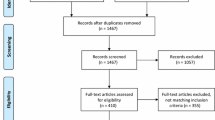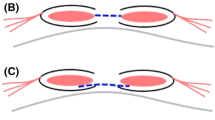Abstract
Introduction
Repair for giant incisional hernias is a challenge due to unacceptable high morbidity and recurrence rates. Several surgical techniques are available, but all are poorly documented. This systematic review was undertaken to evaluate the existing literature on repair for giant incisional hernia.
Methods
Literature was identified through a systematic search on PubMed, EMBASE, and CINAHL. We only included studies with clearly defined surgical techniques and defect size of at least 15 cm. The heterogeneity of the studies precluded a meta-analysis. The analysis was based on the premises of a systematic review of the literature.
Results
We identified 14 studies (1,198 patients) including one randomised trial. Studies were mainly small and retrospective and highly heterogenic regarding design, outcome, inclusion, and exclusion criteria. The overall morbidity rate was median 32 % with a wide range between studies of 4–100 %. The mortality ranged from 0 to 5 % (median 0 %) and recurrence rate ranged from 0 to 53 % (median 5 %). Study follow-up ranged from 15 to 97 months (median 36 months). Mesh repair should always be used for patients undergoing repair for a giant hernia, and the sublay position may have advantages over onlay positioning. To avoid tension, it may be advisable to use a mesh in combination with a component separation technique. Inlay positioning of the mesh and repair without a mesh should be avoided.
Conclusions
Evidence to optimise repair for giant hernias is weak due to the heterogeneity and the poor quality of studies. However, sublay positioning of the mesh perhaps in combination with a component separation technique may be advantageous compared with other surgical techniques for giant hernia repair. Giant hernia repair is a challenging surgical procedure and severely lack evidence-based research from high-quality, large-scaled randomised studies.

Similar content being viewed by others
References
Bucknall TE, Cox PJ, Ellis H (1982) Burst abdomen and incisional hernia: a prospective study of 1129 major laparotomies. Br Med J 284:931–933. doi:10.1136/bmj.284.6320.931
Mudge M, Hughes LE (1985) Incisional hernia: a 10 year prospective study of incidence and attitudes. Br J Surg 72:70–71. doi:10.1002/bjs.1800720127
Helgstrand F, Rosenberg J, Kehlet H, Strandfelt P, Bisgaard T (2012) Reoperation vs. clinical recurrence rate after ventral hernia repair. Ann Surg 256:955–958. doi:10.1097/SLA.0b013e318254f5b9
Helgstrand F, Rosenberg J, Kehlet H, Jørgensen LN, Bisgaard T (2012) Nationwide prospective study of outcome after elective incisional hernia repair. J Am Coll Surg 216:217–228. doi:10.1016/
Liberati A, Altman DG, Tetzlaff J, Mulrow C, Gøtzsche PC, Ioannidis JP, Clarke M, Devereaux PJ, Kleijnen J, Moher D (2009) The PRISMA statement for reporting systematic reviews and meta-analyses of studies that evaluate health care interventions: explanation and elaboration. BMJ 339:b2700. doi:10.1371/journal.pmed.1000100
de Vries Reilingh TS, van Goor H, Charbon JA, Rosman C, Hesselink EJ, van derWilt GJ (2007) Repair of giant midline abdominal wall hernias: “components separation technique” versus prosthetic repair. World J Surg 31:756–763
Hamy A, Pessaux P, Mucci-Hennekinne S, Radriamananjo S, Regenet N, Arnaud J-P (2003) Surgical treatment of large incisional hernias by an intraperitoneal dracon mesh and an aponeurotic graft. J Am Coll Surg 196:531–534
Moreno-Egea A, Mengual-Ballester M, Cases-Baldó MJ, Aguayo-Albasini JL (2010) Repair of complex incisional hernias using double prosthetic repair: single-surgeon experience with 50 cases. Surgery 148:140–144. doi:10.1016/j.surg.2009.12.014
Mazzocchi M, Dessy LA, Ranno R, Carlesimo B, Rubino C (2011) “Component separation” technique and panniculectomy for repair of incisional hernia. Am J Surg 201:776–783. doi:10.1016/j.amjsurg.2010.04.013
Harth KC, Rosen MJ (2010) Endoscopic versus open component separation in complex abdominal wall reconstruction. Am J Surg 199:342–347. doi:10.1016/j.amjsurg.2009.09.015
San Pio JR, Damsgaard TE, Momsen O, Villadsen I, Larsen J (2003) Repair of giant incisional hernias with polypropylene mesh: a retrospective study. Scand J Plast Reconstr Surg Hand Surg 37:102–106. doi:10.1080/02844310310005630
Arnaud JP, Tuech JJ, Pessaux P, Hadchity Y (1999) Surgical treatment of postoperative incisional hernias by intraperitoneal insertion of dracon mesh and an aponeurotic graft: a report on 250 cases. Arch Surg 134:1260–1262
Ferrari GC, Miranda A, Di Lernia S, Sansonna F, Magistro C, Maggioni D, Scandroglio I, Constanzi A, Franzetti M, Pugliese R (2008) Laparoscopic repair of incisional hernia: outcomes of 100 consecutive cases comprising 25 wall defects larger than 15 cm. Surg Endosc 22:1173–1179. doi:10.1007/s00464-007-9707-9
Ferrari GC, Miranda A, Sansonna F, Magistro C, Di Lernia S, Maggioni D, Franzetti M, Pugliese R (2008) Laparoscopic management of incisional hernias ≥15 cm in diameter. Hernia 12:571–576. doi:10.1007/s10029-008-0410-0
Shestak KC, Edington HJ, Johnson RR (2000) The separation of anatomic components technique for the reconstruction of massive midline abdominal wall defects: anatomy, surgical technique, and limitations revised. Plast Reconstr Surg 105:731–738
de Vries Reilingh TS, van Goor H, Rosman C, Bemelmans MH, de Jong D, van Nieuwenhoven EJ, van Engeland MI, Bleichrodt RP (2003) “Components separation technique” for the repair of large abdominal wall hernias. J Am Coll Surg 196:32–37. doi:10.1016/S1072-7515(02)01478-3
Yegiyants S, Tam M, Lee DJ, Abbas MA (2012) Outcome of components separation for contaminated complex abdominal wall defects. Hernia 16:41–45. doi:10.1007/s10029-011-0857-2
DiBello JN Jr, Moore JH Jr (1996) Sliding myofascial flap of the rectus abdominus muscles for the closure of recurrent ventral hernias. Plast Reconstr Surg 98:464–469. doi:10.1097/00006534-199609000-00016
Van Geffen HJ, Simmermacher RK (2005) Incisional hernia repair: abdominoplasty, tissue expansion, and methods of augmentation. World J Surg 29:1080–1085
de Vries Reilingh TS, van Geldere D, Langenhorst B, de Jong D, van der Wilt GJ, van Goor H, Bleichrodt RP (2004) Repair of large midline incisional hernias with polypropylene mesh: comparison of three operative techniques. Hernia 8:56–59. doi:10.1007/s10029-003-0170-9
Ramirez OM, Ruas E, Dellon AL (1990) “Components separation” method for closure of abdominal-wall defects: an anatomic and clinical study. Plast Reconstr Surg 86:519–526
DiCocco JM, Fabian TC, Emmet KP, Magnotti LJ, Goldberg SP, Croce MA (2012) Components separation for abdominal wall reconstruction: the Memphis modification. Surgery 151:118–125
Rosen MJ, Fatima J, Sarr MG (2010) Repair of abdominal wall hernias with restoration of abdominal wall function. J Gastrointest Surg 14:175–185. doi:10.1007/s11605-009-0981-9
den Hartog D, Dur AH, Tuinebreijer WE, Kreis RW (2008) Open surgical procedures for incisional hernias. Cochrane Database Syst Rev. CD006438. doi:10.1002/14651858.CD006438.pub2
Sauerland S, Walgenbach M, Habermalz B, Seiler CM, Miserez M (2011) Laparoscopic versus open surgical techniques for ventral or incisional hernia repair. Cochrane Database Syst Rev CD007781. doi:10.1002/14651858.CD007781.pub2
Wassenaar E, Schoenmaeckers E, Raymakers J, van der Palen J, Rakic S (2010) Mesh-fixation method and pain and quality of life after laparoscopic ventral or incisional hernia repair: a randomized trial of three fixation techniques. Surg Endosc 24:1296–1302. doi:10.1007/s00464-009-0763-1
Forbes SS, Eskicioglu C, McLeod RS, Okrainec A (2009) Meta-analysis of randomized controlled trials comparing open and laparoscopic ventral and incisional hernia repair with mesh. Br J Surg 96:851–858. doi:10.1002/bjs.6668
Müller-Riemenschneider F, Roll S, Friedrich M, Zieren J, Reinhold T, von der Schulenburg JM, Greiner W, Willich SN (2007) Medical effectiveness and safety of conventional compared to laparoscopic incisional hernia repair: a systematic review. Surg Endosc 21:2127–2136. doi:10.1007/s00464-007-9513-4
Sajid MS, Bokhari SA, Mallick AS, Cheek E, Baig MK (2009) Laparoscopic versus open repair on incisional/ventral hernia: a meta-analysis. Am J Surg 197:64–72. doi:10.1016/j.amjsurg.2007.12.051
Tong WM, Hope W, Overby DW, Hultman CS (2011) Comparison of outcome after mesh-only repair, laparoscopic component separation, and open component separation. Ann Plast Surg 66:551–556. doi:10.1097/SAP.0b013e31820b3c91
Bringman S, Conze J, Cuccurullo D, Deprest J, Junge K, Klosterhalfen B, Parra-Davila E, Ramshaw B, Schumpelick V (2010) Hernia repair: the search for ideal meshes. Hernia 14:81–87. doi:10.1007/s10029-009-0587-x
Conflict of interest
AE declares no conflicts of interest. TB and JR declares consultancy outside submitted work, payment for lectures outside submitted work, grant support outside the submitted work, support for travelling outside the submitted work, and no other conflict of interest that directly relates to this study.
Author information
Authors and Affiliations
Corresponding author
Rights and permissions
About this article
Cite this article
Eriksson, A., Rosenberg, J. & Bisgaard, T. Surgical treatment for giant incisional hernia: a qualitative systematic review. Hernia 18, 31–38 (2014). https://doi.org/10.1007/s10029-013-1066-y
Received:
Accepted:
Published:
Issue Date:
DOI: https://doi.org/10.1007/s10029-013-1066-y




